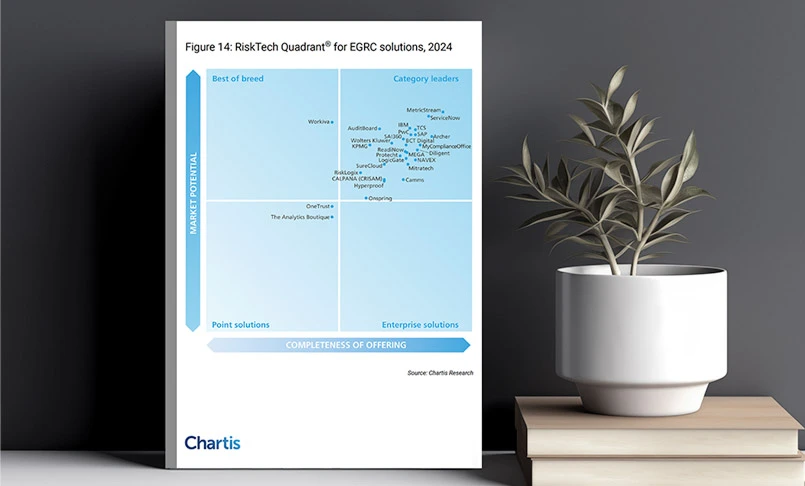Introduction
For any large or small company, challenges such as security breaches, regulatory violations, and financial collapses can have significant repercussions - not only for the company but also for its investors, employees, and stakeholders. One way to mitigate these risks is by introducing a system of robust internal controls. However, just implementing these controls is not enough. It is equally important to regularly review, assess, and update these controls to align with new policies, guidelines, regulations, or laws as they arise.
Conducting an internal control audit is a way to assess the effectiveness of an organization’s internal controls and processes. This ensures that there are no gaps in the system and that any gaps or inadequacies are promptly and effectively addressed.
Key Takeaways
- Internal controls are the policies and procedures put in place to prevent errors, fraud, and inefficiencies. An Internal control audit is the process of reviewing and evaluating these internal control systems to ensure they are functioning effectively.
- An Internal control audit typically revolves around financial reporting, compliance, risk management, and operational efficiency, among others.
- Internal control audits have a few key steps, such as understanding the scope and existing controls, testing these controls for effectiveness, evaluating and reporting findings, and finally following up on and monitoring any changes.
- While there are many benefits to regular audits, such as compliance, improved decision making and stakeholder confidence, it is not without its challenges, including complexity, lack of adequate resources or data, and resistance from employees and management.
- By automating processes, having a control-centric approach, and ensuring continuous monitoring and reviews, some of these challenges can be tackled more easily.
What is an Internal Control Audit?
An internal control audit is the process of reviewing and evaluating an organization's internal control systems to ensure they are functioning effectively to manage risk, safeguard assets, and ensure accurate financial reporting. Internal controls are the policies and procedures put in place to prevent errors, fraud, and inefficiencies.
In larger organizations, this audit can be performed by an internal audit team or an external auditor to provide an independent assessment.
The Purpose of Internal Control Audits
The purpose of internal control audits is to evaluate the effectiveness and efficiency of an organization’s internal control systems. These audits ensure that controls are properly designed and functioning to mitigate risks, safeguard assets, ensure accurate financial reporting, and promote compliance with laws and regulations. By identifying weaknesses or gaps in controls, internal control audits help organizations enhance their processes, prevent fraud, and support overall operational efficiency, leading to better governance and reduced risk exposure.
Types of Internal Controls
There are several examples of internal controls, categorized broadly into preventive, detective, and corrective controls.
Preventive Controls
These are designed to prevent errors or fraud from occurring in the first place. They are proactive measures that ensure processes are carried out correctly from the start. These include segregation of duties, authorization and approval, physical controls, and standard operating procedures.
Detective Controls
These controls are designed to identify and detect errors, fraud, or irregularities after they have occurred. They provide evidence that controls are working effectively or highlight when they are not. These include reconciliations, audits and reviews, and monitoring and surveillance.
Corrective Controls
Corrective controls are measures that are implemented to fix problems after they have been detected. They ensure that errors or irregularities are addressed and that steps are taken to prevent their recurrence. These include backup and recovery procedures, root cause analysis, and disciplinary actions.
In addition, there are other types of controls that focus on different aspects of an organization's operations and risk management, such as financial controls, operational controls, and compliance controls.
Organizations often follow recognized frameworks like the COSO Internal Control Framework or the COBIT Framework to structure their internal controls comprehensively. These frameworks provide guidelines on implementing, evaluating, and maintaining effective internal control systems.
Key Areas of Focus in Internal Control Audits
In an internal control audit, the auditor evaluates the effectiveness and efficiency of the organization’s internal control systems. The key focus areas typically revolve around financial reporting, compliance, risk management, and operational efficiency. These areas ensure that the organization operates in a controlled environment where errors, fraud, and inefficiencies are minimized.
Here are some of the key focus areas in an internal control audit:
- Control Environment & Activities The objective is to examine the ethical culture, leadership attitude, and integrity set by management and ensure that key duties are appropriately separated to reduce the risk of fraud or error. It includes defining responsibilities and their authorities to verify that crucial transactions are authorized by the right management level to ensure accountability. This also means that employees need to have the necessary skills and knowledge to perform their roles effectively. It includes checking physical controls, such as access restrictions or locks, and reviewing controls over processes such as inventory management, payroll, and procurement. These roles and processes need to be continuously monitored so that issues can be identified and corrected as soon as possible.
- Risk Assessment & Fraud Prevention And Detection An audit can help in identifying potential risks that could impact the organization’s objectives, financial reporting, and operations. In addition, it can evaluate whether the organization has adequate mechanisms to manage and mitigate these risks while also anticipating and addressing new and evolving risks, such as changes in regulations or technology. Audits can also help identify areas where the risk of fraud is high, such as cash handling or procurement. They also evaluate whether mechanisms are in place for employees to report fraudulent activities anonymously and can check the effectiveness of anti-fraud policies.
- Communication & Compliance Internal control audits are also responsible for ensuring that the systems in place accurately capture and report financial data, as well as assessing how critical information flows within the organization. It also helps regulate how well the organization communicates internal controls, policies, and responsibilities, both internally and with external stakeholders like regulators or auditors. Audits are also key in ensuring that the organization adheres to external laws, regulations, and standards that govern its industry, making sure that internal policies and procedures are being followed consistently across departments.
- IT and Data Security Controls Internal control audits play a key role in assessing how well IT systems protect data from unauthorized access, both internally and externally. They help review the integrity of financial and operational data by evaluating the IT systems and procedures used to capture and process this information, in addition to ensuring there are adequate plans in place for data recovery in case of system failures or security breaches.
- Third-Party Relationships Audits also help organizations evaluate controls over the selection, approval, and monitoring of third-party vendors, ensuring that controls over outsourced functions are in place and are as robust as those over internal functions.
Steps in the Internal Control Audit Process
The internal control audit process typically follows a structured approach to assess the design and effectiveness of an organization’s internal controls. Here are the five main steps in the internal control audit process:
- Planning The audit team first defines the scope by identifying which areas of the organization will be audited. The scope is determined based on the organization’s risks, size, and complexity. The team then reviews the overall control environment, including management philosophy and organizational structure. Next, the audit objectives are defined, specifying what the auditors aim to evaluate. Finally, auditors identify and assess the risks that could impact the organization’s operations, financial reporting, or compliance. The audit plan will then focus on areas with higher risks.
- Documenting and Understanding Controls Auditors gather detailed information about the internal controls in place. This involves reviewing policies, procedures, and documentation related to the control processes. The team then conducts walkthroughs of processes to understand how controls are applied in real-world scenarios, including observing the execution of key control activities. Finally, the auditors determine which controls are most critical in addressing the organization’s risks, known as “key controls.” These are the controls that will be tested for effectiveness.
- Testing Controls Auditors spend time assessing whether the internal controls are properly designed to address the identified risks, such as reviewing control policies, procedures, and structures to ensure they are capable of preventing or detecting errors. They then test whether the controls are functioning as intended in practice. This is done by examining transactions, observing processes, and evaluating how consistently controls are applied over a specific period. From this evaluation, a sample of transactions or processes is selected for testing to ensure controls are applied uniformly. Sampling helps auditors determine whether controls are operating effectively across different scenarios.
- Evaluating and Reporting Findings The audit team reviews the results of control testing to identify any deficiencies or weaknesses in the internal control system. These deficiencies are classified based on their severity. Next, the auditors evaluate the impact of control deficiencies on the organization’s operations or financial reporting. Significant deficiencies may require immediate corrective action. A report is then prepared summarizing the audit findings, including areas where internal controls are strong and where improvements are needed. The report provides recommendations for addressing any identified control weaknesses.
- Follow-up and Monitoring Once these steps are completed, management is expected to respond to the audit findings and implement corrective actions to address any deficiencies. The audit report may include timelines for management to resolve these issues. Auditors typically follow up with management to ensure that the recommended corrective actions are implemented and that control weaknesses have been resolved. In some cases, auditors may recommend ongoing monitoring of key controls to ensure their continued effectiveness, especially in high-risk areas.
Benefits of Regular Internal Control Audits
Regular internal control audits provide numerous benefits to organizations by ensuring that internal processes and control systems are functioning effectively. Here are some of the key benefits of conducting internal control audits:
- Risk Mitigation By regularly reviewing and improving internal controls, the organization can better prevent fraudulent activities and costly mistakes. With audits, risks are continuously assessed, helping the organization stay prepared for evolving internal and external threats.
- Regulatory Compliance Audits ensure that the organization complies with relevant legal and regulatory requirements, reducing the risk of penalties or sanctions.
- Improved Decision-Making Audits provide management with reliable, up-to-date information about the organization’s internal controls and risk management processes. This enables better decision-making, as leaders have confidence in the accuracy and completeness of their data.
- Increased Stakeholder Confidence Strong internal controls and regular audits build confidence and credibility among investors, shareholders, and other external stakeholders, demonstrating that the organization is well-governed and financially sound.
- Support for Strategic Objectives Regular audits ensure that internal controls are aligned with the organization's strategic objectives. As the organization grows, internal control audits help ensure that the necessary structures are in place to manage the complexity and scale of new initiatives.
Challenges in Conducting an Internal Control Audit
Conducting an internal control audit can be a complex and demanding process due to various challenges, such as:
- Scope and Complexity Internal control audits often involve multiple areas such as financial reporting, operations, IT systems, compliance, and safeguarding of assets. The sheer breadth of the audit can make it difficult to cover all aspects comprehensively. In larger organizations, complex structures with multiple departments, subsidiaries, or geographic locations can complicate the audit process.
- Inadequate Documentation Or Data Internal control processes may not always be properly documented, making it difficult for auditors to verify the existence and effectiveness of controls. This is particularly challenging when policies or procedures are informal or inconsistently applied across departments. Sometimes, data or documentation may exist but may be incomplete, outdated, or not aligned with current risks and procedures, leading to gaps in understanding the control environment.
- Resistance from Employees and Management Employees may view internal control audits as intrusive or time-consuming, resulting in a reluctance to cooperate or provide the necessary information. Resistance from management or staff can undermine the effectiveness of the audit and lead to incomplete assessments.
- Limited Internal Audit Resources Many organizations, especially smaller ones, may not have sufficient internal audit staff or budget to conduct thorough internal control audits. This can limit the frequency and depth of audits, leaving certain risk areas unaddressed. In addition, audits may require specialized knowledge that internal auditors may not possess. This can limit the auditor’s ability to assess specific risk areas effectively.
- Follow-Up and Corrective Action After an internal control audit, management may not always act on the auditor's recommendations, particularly if the findings are perceived as low-priority or costly to implement. This weakens the audit’s impact and leaves risks unaddressed. Even when management agrees to implement corrective measures, delays in execution can expose the organization to ongoing risks, reducing the value of the audit.
Strengthening Your Internal Controls: Essential Best Practices
Strengthening internal controls is essential for managing risks, ensuring accurate financial reporting, safeguarding assets, and maintaining compliance with regulations. To enhance internal controls, organizations should follow certain best practices, such as:
- Segregation of Duties By distributing critical responsibilities such as approving transactions, recording them, and reconciling accounts, across different individuals organizations can help prevent errors, fraud, and conflicts of interest. For smaller organizations where complete segregation isn’t possible, it is best to implement compensating controls like supervisory reviews or additional oversight.
- Regular Risk Assessments Organizations should identify and evaluate emerging risks that could impact operations, financial reporting, or compliance. Regular risk assessments help organizations adapt to new threats, ensuring that controls stay relevant and effective.
- Automate Controls Where Possible Technology can automate routine tasks to reduce human error, speed up processes, and enhance the efficiency of internal controls. It also provides real-time monitoring and flags irregularities. Organizations can invest in systems that provide real-time alerts for anomalies or potential control failures, enabling quicker responses.
- Continuous Monitoring and Review Effective internal controls require regular monitoring to ensure they are functioning as intended. Continuous review and monitoring help detect inefficiencies or control lapses early on. These can be managed through tools and periodic internal audits, with a focus on high-risk areas.
- Employee Training and Awareness Employees play a crucial role in maintaining effective internal controls, so regular training ensures they understand their responsibilities and the importance of compliance. Organizations must foster a control-conscious culture where employees feel empowered to report potential issues or weaknesses in processes.
Why Metricstream?
It is just as important to have internal controls as it is to regularly audit them. The process is constantly evolving and requires regular effort to ensure that current practices do not become obsolete. Organizations must, therefore, foster a culture of continuous improvement, regularly revisiting and refining their control measures.
For organizations seeking to elevate their internal control frameworks, leveraging a robust GRC platform can be immensely beneficial. MetricStream’s Internal Audit Management solution is purpose-built to help organizations navigate the complex and rapidly evolving risk and regulatory landscape efficiently while ensuring a robust internal controls environment. The Internal Audit solution enables you to drive an agile internal audit program that is aligned with your organizational goals and helps you stay prepared for multi-dimensional risks. The advanced software leverages next-gen technologies, such as AI, resulting in your organization drastically cutting down the time spent sorting data to mine insights.
Effectively managing internal controls can aid in a more seamless audit process, ensuring that the organization stays on top of the changing requirements. Want to see it in action? Request a personalized demo today.
Frequently Asked Questions
What are the benefits of an internal control audit?
Regular internal control audits help organizations mitigate risks, ensure regulatory compliance, and improve decision-making by providing reliable information on internal processes. They also enhance stakeholder confidence by demonstrating good governance and support the alignment of controls with strategic objectives, especially as the organization grows and evolves.
What are the best practices to consider when conducting an internal control audit?
Key best practices include segregating duties to prevent errors and fraud, conducting regular risk assessments to adapt to new threats, automating routine controls to enhance efficiency, and continuously monitoring processes to detect issues early.
What does an internal control audit include?
The internal control audit process involves five key steps: planning, where auditors define the scope and assess risks; documenting and understanding controls, by gathering detailed information and identifying key controls; testing controls, to evaluate their design and effectiveness through transactions and process reviews; evaluating and reporting findings, where auditors identify control deficiencies and provide recommendations; and follow-up and monitoring, ensuring management addresses the issues and monitors key controls for ongoing effectiveness, especially in high-risk areas.
For any large or small company, challenges such as security breaches, regulatory violations, and financial collapses can have significant repercussions - not only for the company but also for its investors, employees, and stakeholders. One way to mitigate these risks is by introducing a system of robust internal controls. However, just implementing these controls is not enough. It is equally important to regularly review, assess, and update these controls to align with new policies, guidelines, regulations, or laws as they arise.
Conducting an internal control audit is a way to assess the effectiveness of an organization’s internal controls and processes. This ensures that there are no gaps in the system and that any gaps or inadequacies are promptly and effectively addressed.
- Internal controls are the policies and procedures put in place to prevent errors, fraud, and inefficiencies. An Internal control audit is the process of reviewing and evaluating these internal control systems to ensure they are functioning effectively.
- An Internal control audit typically revolves around financial reporting, compliance, risk management, and operational efficiency, among others.
- Internal control audits have a few key steps, such as understanding the scope and existing controls, testing these controls for effectiveness, evaluating and reporting findings, and finally following up on and monitoring any changes.
- While there are many benefits to regular audits, such as compliance, improved decision making and stakeholder confidence, it is not without its challenges, including complexity, lack of adequate resources or data, and resistance from employees and management.
- By automating processes, having a control-centric approach, and ensuring continuous monitoring and reviews, some of these challenges can be tackled more easily.
An internal control audit is the process of reviewing and evaluating an organization's internal control systems to ensure they are functioning effectively to manage risk, safeguard assets, and ensure accurate financial reporting. Internal controls are the policies and procedures put in place to prevent errors, fraud, and inefficiencies.
In larger organizations, this audit can be performed by an internal audit team or an external auditor to provide an independent assessment.
The purpose of internal control audits is to evaluate the effectiveness and efficiency of an organization’s internal control systems. These audits ensure that controls are properly designed and functioning to mitigate risks, safeguard assets, ensure accurate financial reporting, and promote compliance with laws and regulations. By identifying weaknesses or gaps in controls, internal control audits help organizations enhance their processes, prevent fraud, and support overall operational efficiency, leading to better governance and reduced risk exposure.
There are several examples of internal controls, categorized broadly into preventive, detective, and corrective controls.
Preventive Controls
These are designed to prevent errors or fraud from occurring in the first place. They are proactive measures that ensure processes are carried out correctly from the start. These include segregation of duties, authorization and approval, physical controls, and standard operating procedures.
Detective Controls
These controls are designed to identify and detect errors, fraud, or irregularities after they have occurred. They provide evidence that controls are working effectively or highlight when they are not. These include reconciliations, audits and reviews, and monitoring and surveillance.
Corrective Controls
Corrective controls are measures that are implemented to fix problems after they have been detected. They ensure that errors or irregularities are addressed and that steps are taken to prevent their recurrence. These include backup and recovery procedures, root cause analysis, and disciplinary actions.
In addition, there are other types of controls that focus on different aspects of an organization's operations and risk management, such as financial controls, operational controls, and compliance controls.
Organizations often follow recognized frameworks like the COSO Internal Control Framework or the COBIT Framework to structure their internal controls comprehensively. These frameworks provide guidelines on implementing, evaluating, and maintaining effective internal control systems.
In an internal control audit, the auditor evaluates the effectiveness and efficiency of the organization’s internal control systems. The key focus areas typically revolve around financial reporting, compliance, risk management, and operational efficiency. These areas ensure that the organization operates in a controlled environment where errors, fraud, and inefficiencies are minimized.
Here are some of the key focus areas in an internal control audit:
- Control Environment & Activities The objective is to examine the ethical culture, leadership attitude, and integrity set by management and ensure that key duties are appropriately separated to reduce the risk of fraud or error. It includes defining responsibilities and their authorities to verify that crucial transactions are authorized by the right management level to ensure accountability. This also means that employees need to have the necessary skills and knowledge to perform their roles effectively. It includes checking physical controls, such as access restrictions or locks, and reviewing controls over processes such as inventory management, payroll, and procurement. These roles and processes need to be continuously monitored so that issues can be identified and corrected as soon as possible.
- Risk Assessment & Fraud Prevention And Detection An audit can help in identifying potential risks that could impact the organization’s objectives, financial reporting, and operations. In addition, it can evaluate whether the organization has adequate mechanisms to manage and mitigate these risks while also anticipating and addressing new and evolving risks, such as changes in regulations or technology. Audits can also help identify areas where the risk of fraud is high, such as cash handling or procurement. They also evaluate whether mechanisms are in place for employees to report fraudulent activities anonymously and can check the effectiveness of anti-fraud policies.
- Communication & Compliance Internal control audits are also responsible for ensuring that the systems in place accurately capture and report financial data, as well as assessing how critical information flows within the organization. It also helps regulate how well the organization communicates internal controls, policies, and responsibilities, both internally and with external stakeholders like regulators or auditors. Audits are also key in ensuring that the organization adheres to external laws, regulations, and standards that govern its industry, making sure that internal policies and procedures are being followed consistently across departments.
- IT and Data Security Controls Internal control audits play a key role in assessing how well IT systems protect data from unauthorized access, both internally and externally. They help review the integrity of financial and operational data by evaluating the IT systems and procedures used to capture and process this information, in addition to ensuring there are adequate plans in place for data recovery in case of system failures or security breaches.
- Third-Party Relationships Audits also help organizations evaluate controls over the selection, approval, and monitoring of third-party vendors, ensuring that controls over outsourced functions are in place and are as robust as those over internal functions.
The internal control audit process typically follows a structured approach to assess the design and effectiveness of an organization’s internal controls. Here are the five main steps in the internal control audit process:
- Planning The audit team first defines the scope by identifying which areas of the organization will be audited. The scope is determined based on the organization’s risks, size, and complexity. The team then reviews the overall control environment, including management philosophy and organizational structure. Next, the audit objectives are defined, specifying what the auditors aim to evaluate. Finally, auditors identify and assess the risks that could impact the organization’s operations, financial reporting, or compliance. The audit plan will then focus on areas with higher risks.
- Documenting and Understanding Controls Auditors gather detailed information about the internal controls in place. This involves reviewing policies, procedures, and documentation related to the control processes. The team then conducts walkthroughs of processes to understand how controls are applied in real-world scenarios, including observing the execution of key control activities. Finally, the auditors determine which controls are most critical in addressing the organization’s risks, known as “key controls.” These are the controls that will be tested for effectiveness.
- Testing Controls Auditors spend time assessing whether the internal controls are properly designed to address the identified risks, such as reviewing control policies, procedures, and structures to ensure they are capable of preventing or detecting errors. They then test whether the controls are functioning as intended in practice. This is done by examining transactions, observing processes, and evaluating how consistently controls are applied over a specific period. From this evaluation, a sample of transactions or processes is selected for testing to ensure controls are applied uniformly. Sampling helps auditors determine whether controls are operating effectively across different scenarios.
- Evaluating and Reporting Findings The audit team reviews the results of control testing to identify any deficiencies or weaknesses in the internal control system. These deficiencies are classified based on their severity. Next, the auditors evaluate the impact of control deficiencies on the organization’s operations or financial reporting. Significant deficiencies may require immediate corrective action. A report is then prepared summarizing the audit findings, including areas where internal controls are strong and where improvements are needed. The report provides recommendations for addressing any identified control weaknesses.
- Follow-up and Monitoring Once these steps are completed, management is expected to respond to the audit findings and implement corrective actions to address any deficiencies. The audit report may include timelines for management to resolve these issues. Auditors typically follow up with management to ensure that the recommended corrective actions are implemented and that control weaknesses have been resolved. In some cases, auditors may recommend ongoing monitoring of key controls to ensure their continued effectiveness, especially in high-risk areas.
Regular internal control audits provide numerous benefits to organizations by ensuring that internal processes and control systems are functioning effectively. Here are some of the key benefits of conducting internal control audits:
- Risk Mitigation By regularly reviewing and improving internal controls, the organization can better prevent fraudulent activities and costly mistakes. With audits, risks are continuously assessed, helping the organization stay prepared for evolving internal and external threats.
- Regulatory Compliance Audits ensure that the organization complies with relevant legal and regulatory requirements, reducing the risk of penalties or sanctions.
- Improved Decision-Making Audits provide management with reliable, up-to-date information about the organization’s internal controls and risk management processes. This enables better decision-making, as leaders have confidence in the accuracy and completeness of their data.
- Increased Stakeholder Confidence Strong internal controls and regular audits build confidence and credibility among investors, shareholders, and other external stakeholders, demonstrating that the organization is well-governed and financially sound.
- Support for Strategic Objectives Regular audits ensure that internal controls are aligned with the organization's strategic objectives. As the organization grows, internal control audits help ensure that the necessary structures are in place to manage the complexity and scale of new initiatives.
Conducting an internal control audit can be a complex and demanding process due to various challenges, such as:
- Scope and Complexity Internal control audits often involve multiple areas such as financial reporting, operations, IT systems, compliance, and safeguarding of assets. The sheer breadth of the audit can make it difficult to cover all aspects comprehensively. In larger organizations, complex structures with multiple departments, subsidiaries, or geographic locations can complicate the audit process.
- Inadequate Documentation Or Data Internal control processes may not always be properly documented, making it difficult for auditors to verify the existence and effectiveness of controls. This is particularly challenging when policies or procedures are informal or inconsistently applied across departments. Sometimes, data or documentation may exist but may be incomplete, outdated, or not aligned with current risks and procedures, leading to gaps in understanding the control environment.
- Resistance from Employees and Management Employees may view internal control audits as intrusive or time-consuming, resulting in a reluctance to cooperate or provide the necessary information. Resistance from management or staff can undermine the effectiveness of the audit and lead to incomplete assessments.
- Limited Internal Audit Resources Many organizations, especially smaller ones, may not have sufficient internal audit staff or budget to conduct thorough internal control audits. This can limit the frequency and depth of audits, leaving certain risk areas unaddressed. In addition, audits may require specialized knowledge that internal auditors may not possess. This can limit the auditor’s ability to assess specific risk areas effectively.
- Follow-Up and Corrective Action After an internal control audit, management may not always act on the auditor's recommendations, particularly if the findings are perceived as low-priority or costly to implement. This weakens the audit’s impact and leaves risks unaddressed. Even when management agrees to implement corrective measures, delays in execution can expose the organization to ongoing risks, reducing the value of the audit.
Strengthening internal controls is essential for managing risks, ensuring accurate financial reporting, safeguarding assets, and maintaining compliance with regulations. To enhance internal controls, organizations should follow certain best practices, such as:
- Segregation of Duties By distributing critical responsibilities such as approving transactions, recording them, and reconciling accounts, across different individuals organizations can help prevent errors, fraud, and conflicts of interest. For smaller organizations where complete segregation isn’t possible, it is best to implement compensating controls like supervisory reviews or additional oversight.
- Regular Risk Assessments Organizations should identify and evaluate emerging risks that could impact operations, financial reporting, or compliance. Regular risk assessments help organizations adapt to new threats, ensuring that controls stay relevant and effective.
- Automate Controls Where Possible Technology can automate routine tasks to reduce human error, speed up processes, and enhance the efficiency of internal controls. It also provides real-time monitoring and flags irregularities. Organizations can invest in systems that provide real-time alerts for anomalies or potential control failures, enabling quicker responses.
- Continuous Monitoring and Review Effective internal controls require regular monitoring to ensure they are functioning as intended. Continuous review and monitoring help detect inefficiencies or control lapses early on. These can be managed through tools and periodic internal audits, with a focus on high-risk areas.
- Employee Training and Awareness Employees play a crucial role in maintaining effective internal controls, so regular training ensures they understand their responsibilities and the importance of compliance. Organizations must foster a control-conscious culture where employees feel empowered to report potential issues or weaknesses in processes.
It is just as important to have internal controls as it is to regularly audit them. The process is constantly evolving and requires regular effort to ensure that current practices do not become obsolete. Organizations must, therefore, foster a culture of continuous improvement, regularly revisiting and refining their control measures.
For organizations seeking to elevate their internal control frameworks, leveraging a robust GRC platform can be immensely beneficial. MetricStream’s Internal Audit Management solution is purpose-built to help organizations navigate the complex and rapidly evolving risk and regulatory landscape efficiently while ensuring a robust internal controls environment. The Internal Audit solution enables you to drive an agile internal audit program that is aligned with your organizational goals and helps you stay prepared for multi-dimensional risks. The advanced software leverages next-gen technologies, such as AI, resulting in your organization drastically cutting down the time spent sorting data to mine insights.
Effectively managing internal controls can aid in a more seamless audit process, ensuring that the organization stays on top of the changing requirements. Want to see it in action? Request a personalized demo today.
What are the benefits of an internal control audit?
Regular internal control audits help organizations mitigate risks, ensure regulatory compliance, and improve decision-making by providing reliable information on internal processes. They also enhance stakeholder confidence by demonstrating good governance and support the alignment of controls with strategic objectives, especially as the organization grows and evolves.
What are the best practices to consider when conducting an internal control audit?
Key best practices include segregating duties to prevent errors and fraud, conducting regular risk assessments to adapt to new threats, automating routine controls to enhance efficiency, and continuously monitoring processes to detect issues early.
What does an internal control audit include?
The internal control audit process involves five key steps: planning, where auditors define the scope and assess risks; documenting and understanding controls, by gathering detailed information and identifying key controls; testing controls, to evaluate their design and effectiveness through transactions and process reviews; evaluating and reporting findings, where auditors identify control deficiencies and provide recommendations; and follow-up and monitoring, ensuring management addresses the issues and monitors key controls for ongoing effectiveness, especially in high-risk areas.








